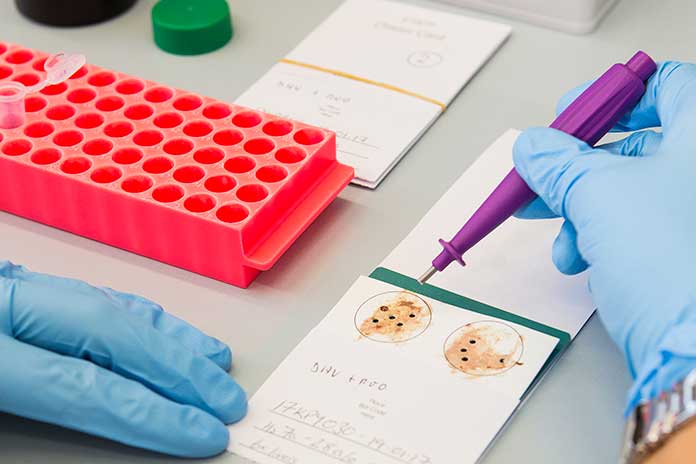
A field perspective.
You notice the mortality is up this morning in one of your brooder houses. Your first thought might be “better take some birds to the lab.” So, you put 4-5 birds in a box and set them in the back of your truck. After lunch you drop them off at the lab with a submission form that says, “mortality up” or “sick birds.” We’ve all done this, or something very similar. We’re setting ourselves up for disappointment and selling our labs short.
Your company may have its own diagnostic lab, or you may use outside labs (state, university, or private) or both. In any case, it’s important to take full advantage of their capabilities to insure you get the most information possible. Whether you’re submitting blood samples for routine pre-slaughter AI checks or live birds for a full workup, there are several things to keep in mind that will help maximize your results. We’re going to talk about three areas to concentrate on: communication, sample collection, and data management.
We all know communication is the foundation of any relationship and it’s important to develop a good relationship with your lab(s). Get to know the folks who process your samples, run the tests, and report the results. You might not get to meet them all, but at least try to know their names and a little about them. Let them know you appreciate what they’re doing. They often work after hours and on holidays to get you timely results.
Also, try to let them know what you’re looking for. Is this submission a one-time diagnostic case, or are you trying to monitor a trend over time? Find out which tests your primary lab is comfortable doing and identify other labs for more specialized testing. Your company lab may do a great job with serology and bacteriology, but you may need to send samples elsewhere for virus isolation or histopathology. It’s also important to be familiar with the labs’ fee schedules. It may be less expensive to submit live birds and request additional tests than to submit tracheal swabs for a specific PCR.
Find out what samples and how many are required for each test. Don’t assume that a tissue sample or swab can be used to run multiple tests. Determine how the samples should be shipped. Samples for some tests may need to be on dry ice while others may be fine with cold packs. Tissues for histopathology should go into formalin as soon as possible to preserve as much of the detail as possible. Some labs may be fine receiving clotted blood samples, while others would rather have the serum separated. Be sure to provide as much information as possible with your submissions (at least everything the lab asks for). It can also be very helpful to email pictures of what you’re actually seeing in the field. This will allow for a better report from the lab and make it easier for you to organize the results.
Organizing your lab results can be quite a challenge. Chances are you’re receiving results from multiple labs in a variety of formats. You may be getting histograms depicting serology results, tables showing bacterial isolates and their antibiotic sensitivity patterns, and paragraphs describing lesions seen on histopathology. These reports are most likely PDF files so, even if they are emailed to you, you can’t do much with the information. You can print them out and file them in the appropriate drawer or even categorize them electronically. Still, it’s difficult to correlate them with flock performance and follow health trends for a flock or farm over time.
Ultimately, we need to have all this information in a data base we can easily query for specific relationships and trends. However, re-entering all this information can be daunting and is often left undone. We end up with a lot of reports that may have answered our initial questions but could also provide much more useful information down the road if managed properly.

















